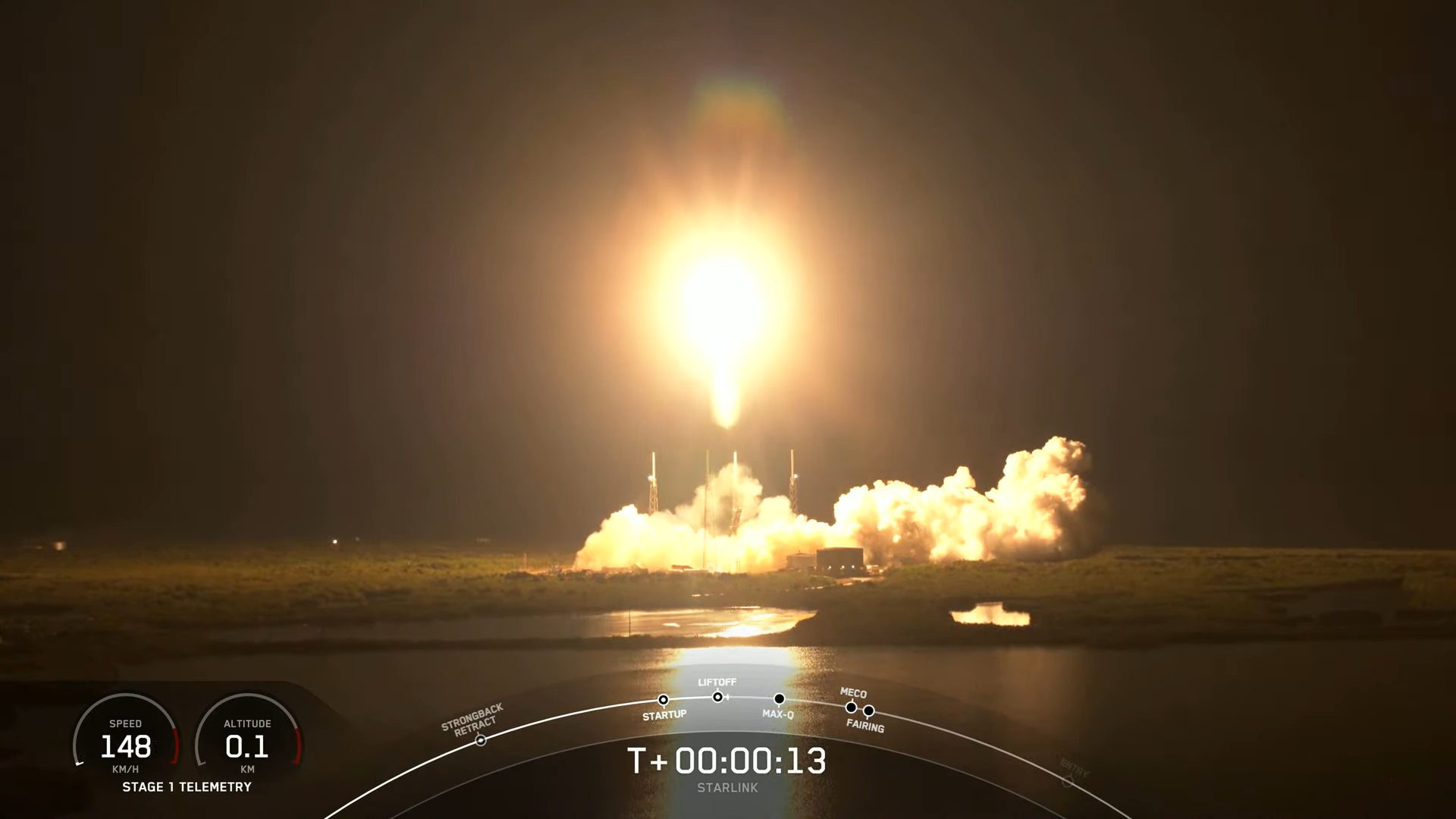
SpaceX is gearing up for the first eight-launch month in its chequered history, with a salvo of flights from the East and West Coasts as the last days of January ebb away. Having already flown five times inside the month’s first three weeks—including the return of the triple-barreled Falcon Heavy and missions by brand-new unflown and record-tying reflown Falcon 9 booster cores—at 4:32 a.m. EST Thursday the Hawthorne, Calif.-headquartered organization kicked off a potential trio of flights in the coming days to deliver upwards of 150 Starlink internet communications satellites to low-Earth orbit.
If achieved, eight flights in a single calendar month will stand SpaceX in exceptionally good stead to approach its oft-stated goal of up to a hundred missions in 2023. Last year, it hit 61 launches with 17 Falcon 9 cores, almost doubling its previous personal best of 31 launches with ten Falcon 9 cores achieved at the close of 2021.
Monthly launch rates have also increased drastically as individual booster cores have not only flown more often, but were turned around between flights in far shorter timeframes. SpaceX first achieved two launches in a single calendar month in September 2014, before advancing to three in June 2017, then four in November 2020, five in December 2021 and six and seven in April and December of last year, respectively.
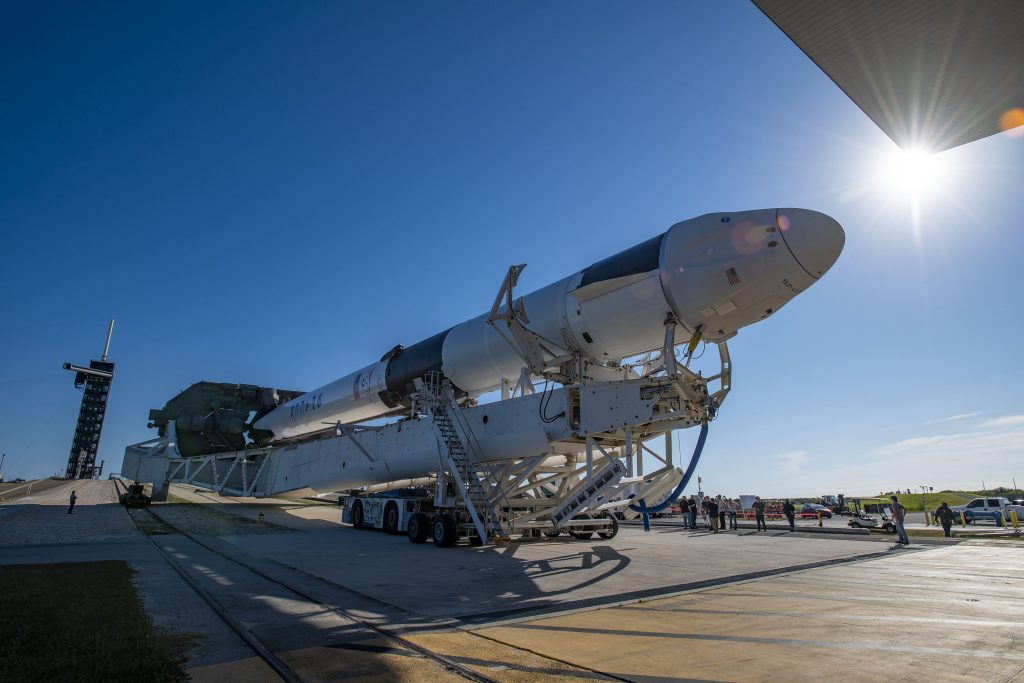
The first three weeks of January have been a hive of activity, with the record-tying, 15-times-flown B1060 core kicking off 2023 from Cape Canaveral Space Force Station, Fla., delivering the 114-payload Transporter-6 rideshare mission to orbit. Forty broadband internet satellites for London, England-based OneWeb, the year’s first launch out of Vandenberg Space Force Base, Calif., and the highly classified USSF-67 and the sixth Block III Global Positioning System (GPS III-06) for the U.S. Space Force followed in rapid succession.
Attention for today’s launch reverted to storied Space Launch Complex (SLC)-40 at the Cape and the return of B1067, a Falcon 9 core which has already logged eight missions. Most recently, she flew in mid-December to deliver the first of three batches of O3b mPOWER broadband satellites for Luxembourg-based SES on the first leg of their trek to a 5,000-mile-high (8,000-kilometer) Medium Earth Orbit (MEO).
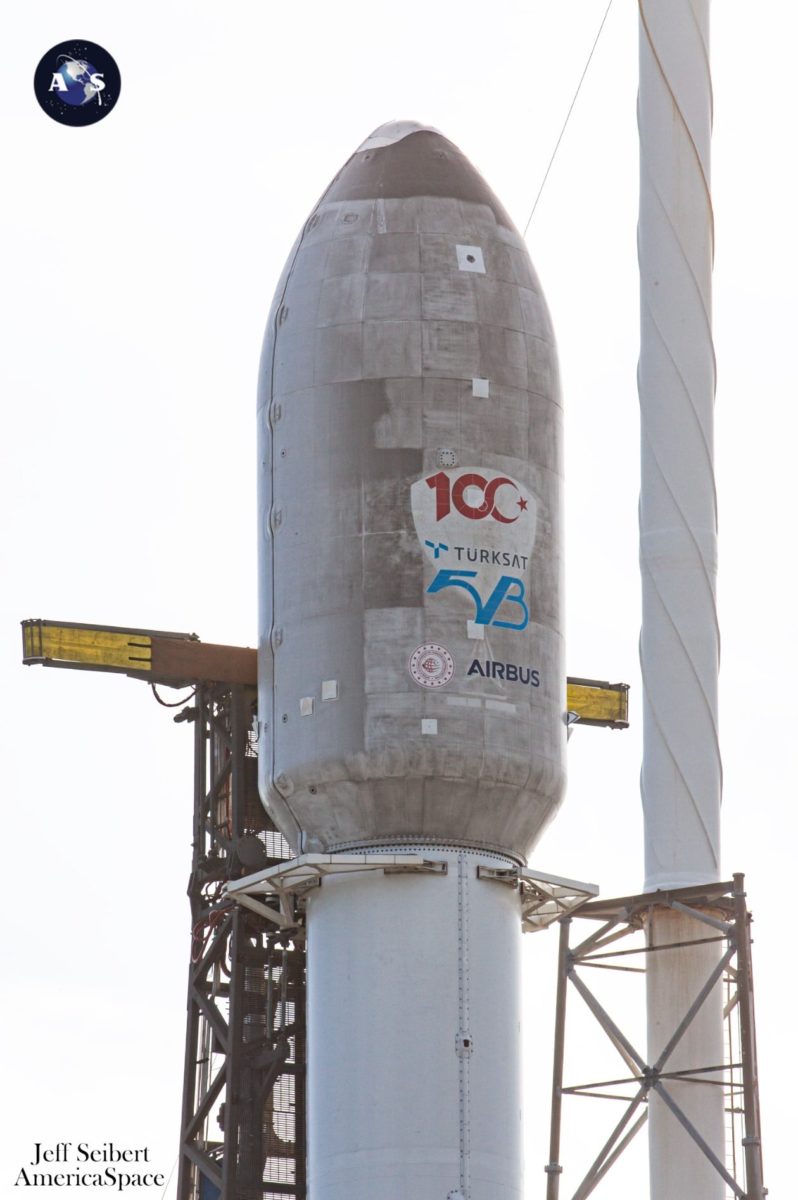
B1067 entered SpaceX’s Falcon 9 fleet in June 2021, when she lofted the CRS-22 Cargo Dragon for its month-long voyage to the International Space Station (ISS). She went on to deliver eight astronauts from the United States, Germany and Italy to the station as part of the Crew-3 and Crew-4 missions in November 2021 and last April.
Added to that list, she ferried a powerful geostationary communications satellite uphill for Turkey, the CRS-25 Cargo Dragon to the ISS, a 54-strong Starlink payload and the high-powered Hotbird 13G broadband satellite. With Thursday’s launch, B1067 became the seventh Falcon 9 core in less than two years to log a ninth mission.
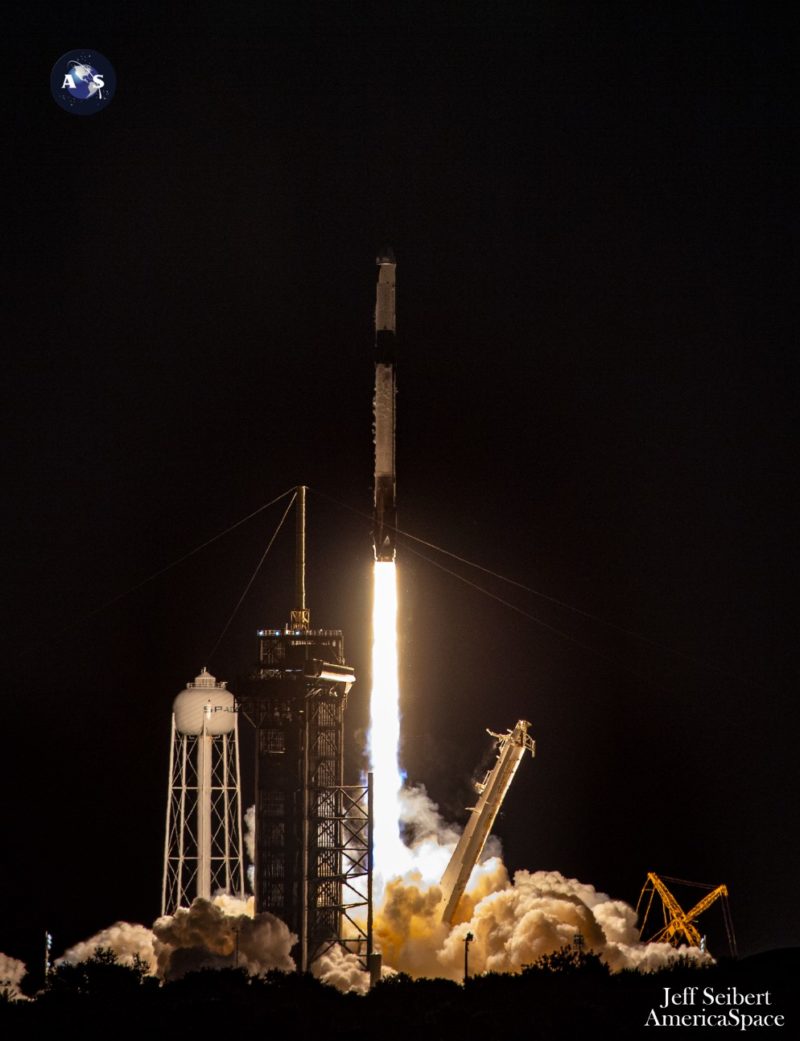
Weather conditions for Thursday’s opening launch attempt were predicted to be around 70-percent favorable, according to the L-2 update from the 45th Weather Squadron at Patrick Space Force Base. Potential violations centered upon the Cumulus Cloud Rule, the Surface Electric Fields Rule and the Thick Cloud Layers Rule.
“A strong low-pressure area is moving through the Ohio Valley, while its trailing cold front is moving across the Florida Panhandle,” the 45th noted in its L-1 weather update, issued on Wednesday morning. “Although this cold front will weaken as the low-pressure area tracks north, the boundary will be very close to the Spaceport during the launch window Thursday morning.
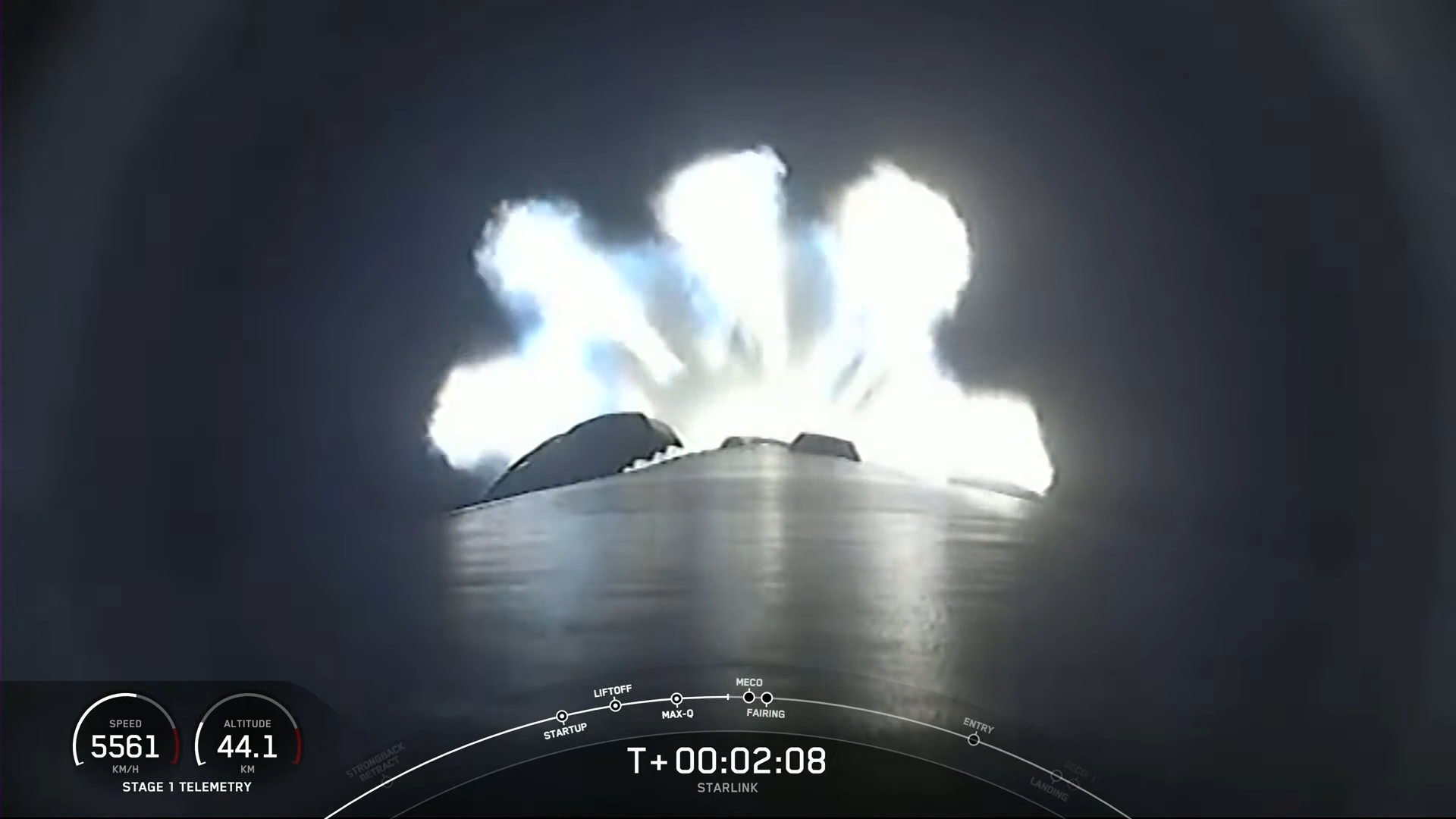
“Skies will clear through the day Thursday, with temperatures hovering in the low sixties, as high pressure pushes into the Gulf Coast States,” it was added. All told, this was expected to create a 70-percent chance of acceptable weather for Thursday’s two T-0 opportunities at 4:22 a.m. EST and 6:03 a.m. EST, improving to 90 percent for the twin backup opportunities at 3:57 a.m. EST and 5:38 a.m. EST Friday.
In readiness for B1067’s ninth launch, the Autonomous Spaceport Drone Ship (ASDS), “Just Read the Instructions” put to sea out of Port Canaveral, bound for a recovery position about 410 miles (660 kilometers) downrange. And in an increasingly rare move, SpaceX executed a Static Fire Test of B1067’s nine Merlin 1D+ first-stage engines at SLC-40 on Wednesday morning.
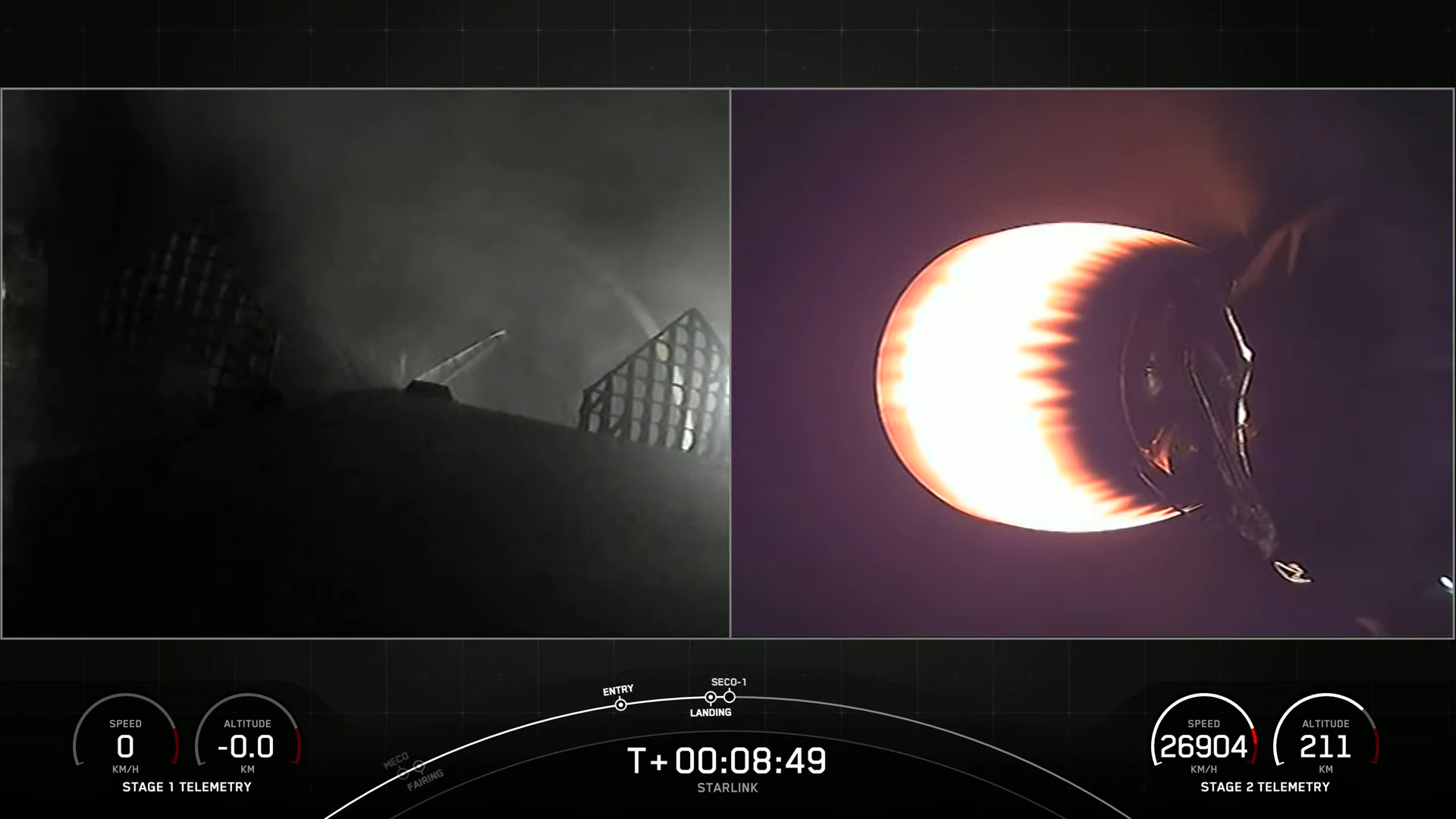
With weather holding steady at 70-percent favorable, less than an hour before the targeted T-0, SpaceX announced a revised launch time. “New T-0 of 4:32 a.m. for this morning’s Falcon 9 launch of Starlink,” it noted at 3:40 a.m. EST, without further elaboration.
January’s sixth Falcon 9 thus speared smoothly uphill at 4:32 a.m. EST, the exhaust from B1067’s nine Merlins piercing the pre-dawn darkness. Two and a half minutes later, the core separated from the stack for a picture-perfect descent to land on the drone ship, marking JRTI’s first Falcon 9 “catch” of 2023.
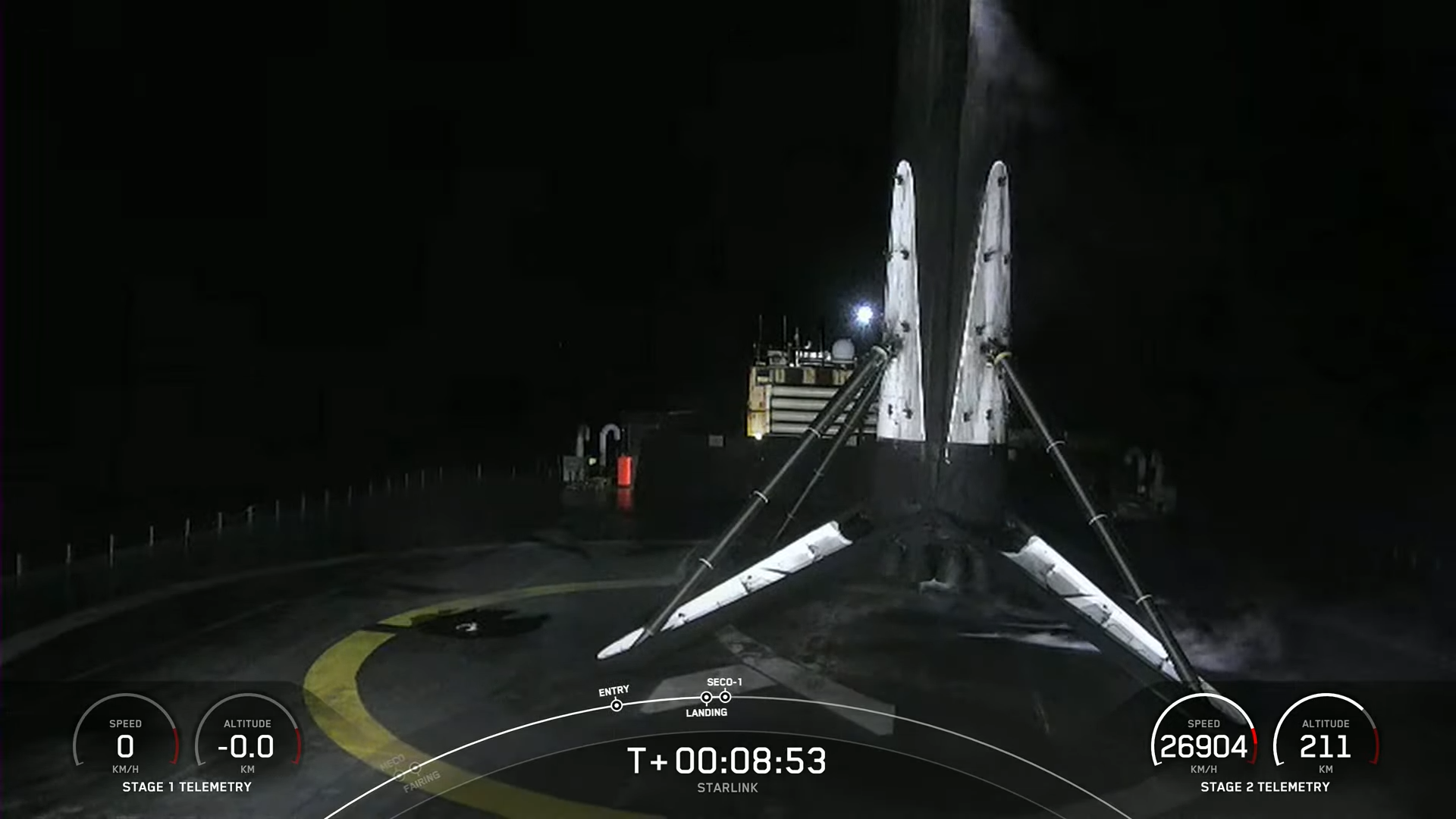
Meanwhile, in a well-trodden path, the Merlin 1D+ Vacuum engine of the Falcon 9’s second stage ignited for a customary six-minute “burn” to lift today’s 56-strong Starlink payload to their deployment altitude. The stack was deployed just shy of 19 minutes after liftoff, bringing 2023’s running Starlink tally to 107 and the total number of these low-orbiting internet communications satellites lofted since May 2019 to 3,771.
This morning’s haul represents the second batch of SpaceX’s Generation 2 Starlinks, bound for a 330-mile-high (530-kilometer) orbit. An earlier Generation 2 batch was launched in late December, bound for emplacement in the previously unused “slot” of 43 degrees of orbital inclination.
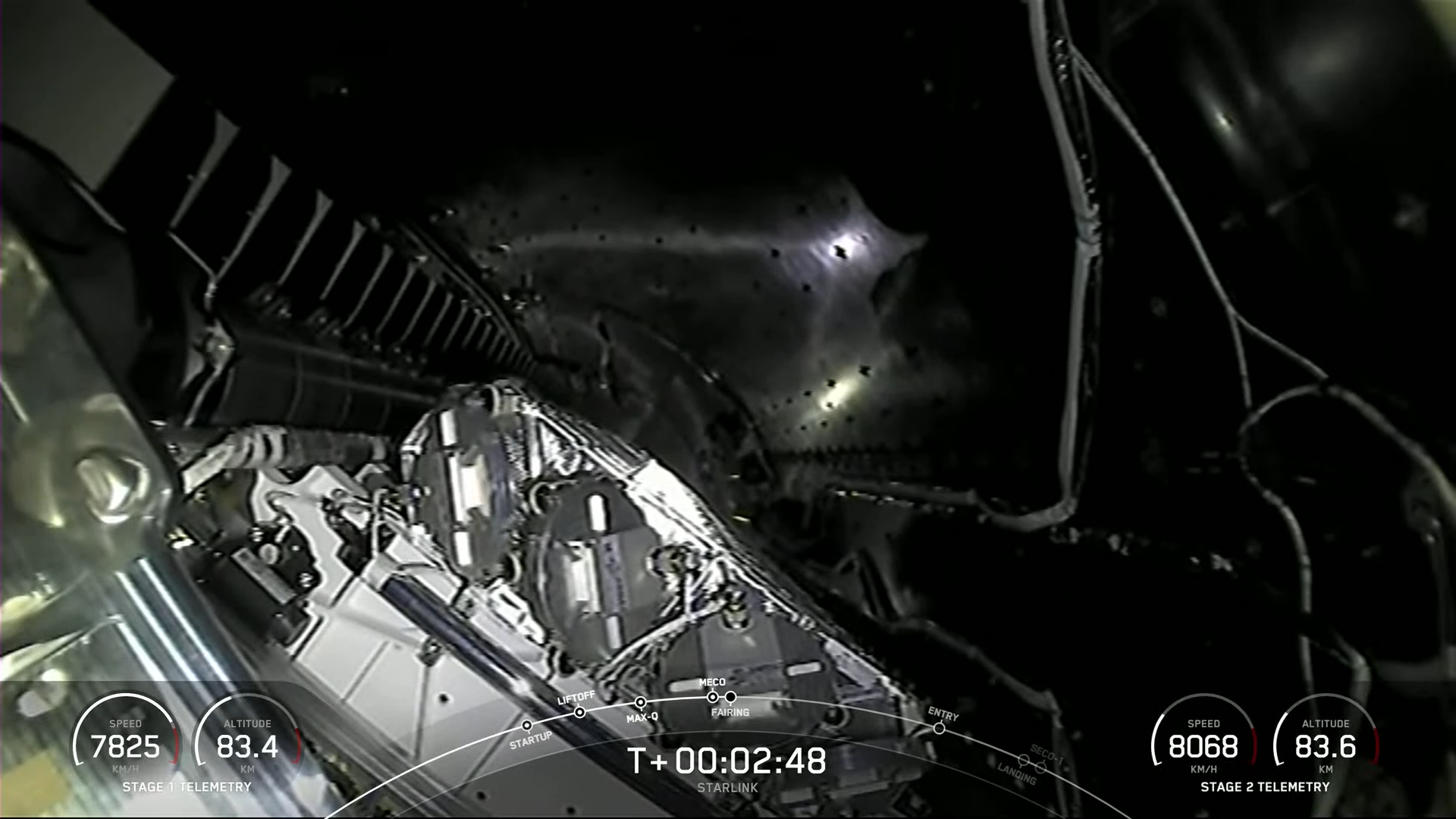
All told, this has helped to facilitate Starlink connectivity across 45 sovereign nations and worldwide markets spanning North and South America, Europe, Asia and Oceania, with . It also saw emergency provision furnished to Ukraine last spring and a pair of FIFA World Cup match balls to and from space last fall.
Looking ahead, two more Starlink-laden Falcon 9 missions—one from Vandenberg’s Space Launch Complex (SLC)-4E, as early as Sunday 29th, and another from historic Pad 39A at Florida’s Kennedy Space Center (KSC) on Tuesday 31st—may close out January with eight launches. Notably, the first of those two missions will be the 200th launch of a Falcon 9 booster since the fleet’s maiden outing back in June 2010.




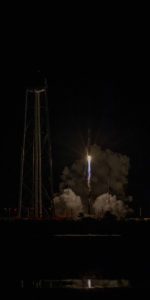

4 Comments
4 Pings & Trackbacks
Pingback:SpaceX Launches Inmarsat-6 F2, Other GTO-Bound Missions Wait in Wings - AmericaSpace
Pingback:As SpaceX Lofts 40 OneWeb Satellites, Relativity Space Aims for Launch Attempt #2 on Saturday - AmericaSpace
Pingback:Relativity, SpaceX Target Florida Launches This Week - AmericaSpace
Pingback:SpaceX Prepares for Record-Breaking Falcon 9 Launch Today - AmericaSpace